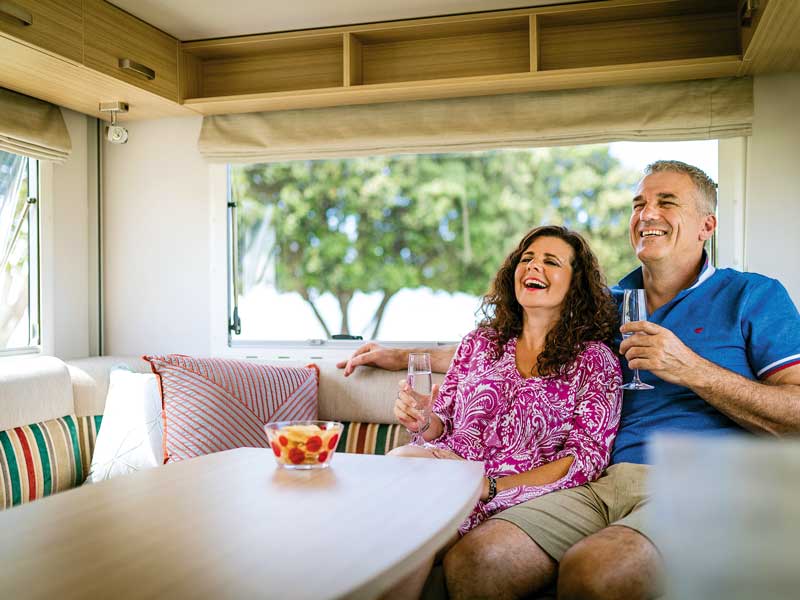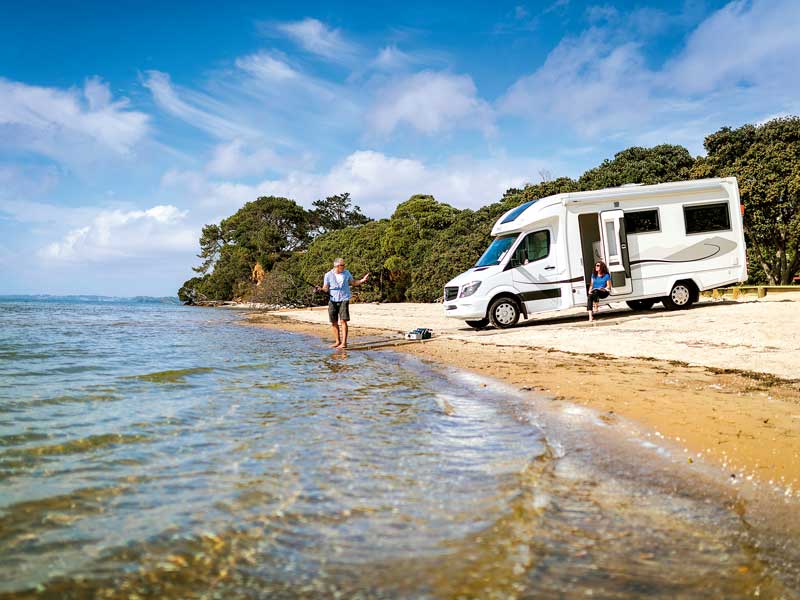Motorhomes and caravans are an appealing choice for so many people. The freedom of a new destination or view every day lures many in, as there’s nothing quite like a motorhome or caravan for escaping everyday life to explore our beautiful country.
Motorhomes and caravans come in many shapes and sizes, and it’s important you’re clear on how you intend on using your chosen model, where you’ll be taking it, and who’ll you’ll be sharing it with. Make sure you are well informed and have answers to all the questions and most importantly you have clearly identified your list of non-negotiable requirements.
What base vehicle is right for you?
This largely depends on how you plan on using the motorhome and your version of the dream lifestyle. That’s why I encourage everyone to think first about the dream and to get clear on what your needs are before thinking too much about the product. When it comes to base vehicles, there are two main categories available to new motorhome purchasers—European and Japanese. Both offer outstanding quality, so in many cases, your choice will come down to personal preference. Whatever your choice, you can rest assured that Euro 6 emissions control is now standard for all new base vehicles. What’s more, safety features have come a long way recently with dual airbags and ABS brakes as standard.However, factors you should consider include:
European style (Mercedes-Benz Sprinter, Fiat Ducato, Ford Transit, Iveco Daily, Volkswagen Crafter) Comfortable, refined, car-like, European-style base vehicles can have more safety features. They are economical and mostly can be driven on car licenses, so are typically used for smaller motorhomes. Lower to the ground, they generally enable you to walk through from your living area to the cab and swivel seats can extend the living area. One thing to watch for is that the ‘nose’ of these vehicles generally sticks out, giving you extra metres of ‘parkable’ length that don’t provide extra living space. Japanese style (Mitsubishi Fuso Canter, Isuzu N-series) Large and powerful and ideal for towing, these vehicles offer bulletproof reliability. Very cost-effective, they are ideally suited for larger motorhomes, offering more options for storage, batteries, etc. One key factor to consider is that the Japanese-style vehicles offer more options for repairs to be carried out by trained and experienced service departments. For example, most decent-sized towns in New Zealand have a Mitsubishi or Holden (Isuzu) dealer, whereas there are few agents for some of the European makes of base vehicles throughout the country.Other points to consider:
- Check your new motorhome comes with a full factory-backed warranty on the base vehicle. Some simply come with a mechanical insurance policy that may not guarantee original factory parts and service.
- What transmission will you choose? The three main transmissions are manual, automatic, and AMT (automated manual transmission). Major manufacturers report the trend is definitely towards automatic, with many people preferring that it’s the same as the vehicle they drive at home.
- If you’re unfamiliar with driving a larger vehicle, that fact that it’s auto means you’ve got one less thing to think about.
- Be aware that some European chassis will be front wheel drive, including the Fiat Ducato and the Ford Transit.








